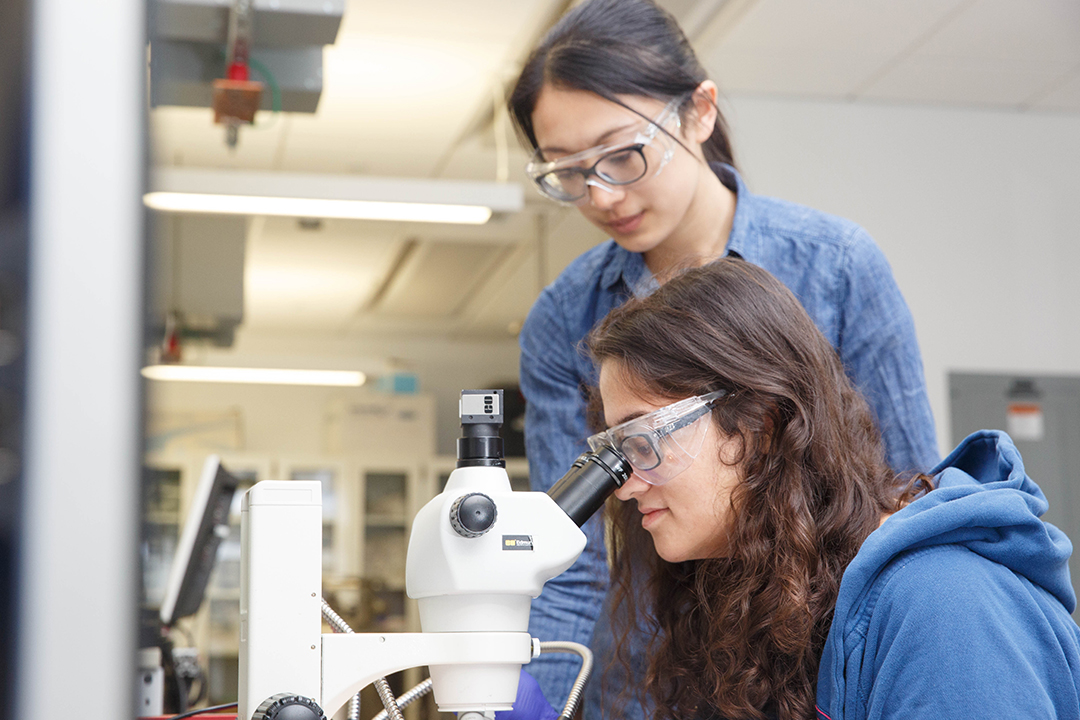From tracking fossil footprints through Kenya to enhancing cybersecurity to preparing the next generation of math and science teachers, it’s been a banner year for major new research grants at Columbian College. Faculty and student researchers have measured the rise in sea-levels, charted the intensity of gamma rays and advanced HIV testing in Colombia. The following are among the college’s major grants* awarded during fiscal year 2017 (July 1, 2016—June 30, 2017):
Sean Aday (media and public affairs): $125,000 from The William and Flora Hewlett Foundation to study cybersecurity in the media.
Michael Bradley (economics): $120,000 from the United States Postal Service for his work titled “Research on Product Costing Under the Postal Accountability and Enhancement Act.”
David Braun (anthropology): $101,000 from the National Science Foundation (NSF) for his work titled “Hominin footprints, fossils and their context in the early Pleistocene of Koobi Fora, Kenya.”
Christopher Brick (Eleanor Roosevelt Papers Project): $198,000 from the National Archives and Records Administration for his work with the Eleanor Roosevelt Papers.
Sarah Calabrese (psychology): $290,000 from the U.S. Department of Health and Human Services/National Institutes of Health (NIH) for her research titled “Intervention to Promote PrEP Awareness and Equitable Prescription among Providers.”
James M. Clark (biology): $280,000 from NSF to study Triassic-Jurassic fossils and the origins of the crocodilian skull.
Gerald Feldman (physics): $580,000 from the U.S. Department of Energy for Compton-scattering studies of the High Intensity Gamma Source.
Keryn Gedan (biology): $110,000 from the U.S. Department of Commerce for her research on biodiversity and blue carbon in the face of sea-level rise and barrier-island migration.
Helmut Haberzettl (physics): $200,000 from the U.S. Department of Energy for the analysis of hadronic and electromagnetic interactions.
Jakub Kostal (chemistry): $100,000 from the PhRMA Foundation to re-design the chemical compound tricresyl phosphate for safety and increased efficacy.
Hua Liang (statistics): $146,000 from NSF to conduct an analysis of longitudinal multiscale data in immunological bioinformatics including graphical models and structure identification.
Ira Lurie (forensic sciences): $134,000 from the U.S. Department of Justice to study the utility of multi-dimensional liquid chromatography for the analysis of seized drugs.
Shannon McFarlin (anthropology): $394,000 from NSF to unlock the hard tissue record of baboon adaptability in response to environmental change in the Amboseli basin, Kenya.
Larry Medsker (physics): $1,497,000 from NSF for his project “STEM Teaching Excellence in High Need Schools: Teacher Preparation in the Nation's Capital.”
Peter Nemes (chemistry): $650,000 as part of the National Science Foundation Career Award from the Biology Directorate.
Weiqun Peng (physics): $581,000 from NIH to explore the proteins Tcf1/Lef1 and beta-catenin in follicular helper T-cells.
Xiangyun Qiu (physics): $397,000 from NSF for his study on elucidating chromatin, a highly dynamic nucleoprotein complex of DNA and proteins that controls DNA-dependent processes.
Mark Reeves (physics): $216,000 from NSF for community sourcing introductory physics for the life sciences.
Amy E. Zanne (biology): $539,000 from NSF for her research titled “Tropical deadwood carbon fluxes: Improving carbon models by incorporating termites and microbes.”
Maria Cecilia Zea (psychology): $595,000 from the National Institute of Mental Health for a webnovela-based intervention program to promote HIV testing among at-risk Colombian men.
*Dollar figures are rounded to the nearest thousand.


